The Nikon Z9 is the company's most powerful camera yet, competing with the Canon EOS R3 and Sony A1 for the full-frame mirrorless camera crown. It's a camera that has it all; 45.7MP stacked sensor, 20fps bursts with continuous 3D tracking AF and unlimited JPEG buffer, plus 8K video recording. Yet there's one thing the Z9 doesn't have – a mechanical shutter.
For all its razzle and dazzle, we're particularly intrigued by the Z9's sole reliance on an electronic shutter. After all, other mirrorless and DSLR cameras (barring video-centric models like the Sigma FP ) all include both mechanical and electronic shutter types. Is this an inspired and progressive design choice, or a potential catastrophic error?
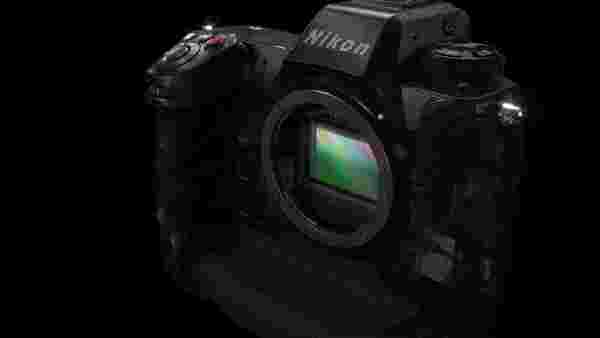
To find out, we spoke to Nikon's product specialist Dirk Jasper and quizzed him about why Nikon's so confident in the Z9's new tech and what it means for the future of both shutter design and cameras.
Before we find out if the Z9 really does spell the beginning of the end for mechanical shutter, though, let's unpack what camera shutters are for and why most cameras pair them with an electronic shutter.
Curtain raiser
What exactly is a mechanical shutter? In a digital cameras, it both protects the image sensor and opens to accept light and create your photographs.
Originally used in film cameras, then DSLRs and mirrorless models, there are two main types of mechanical shutter; focal plane and leaf. A focal plane shutter has two metal 'curtains' that allow and exclude light, while leaf shutters have a circular arrangement of overlapping blades with the less 'aggressive' shutter action of the two.
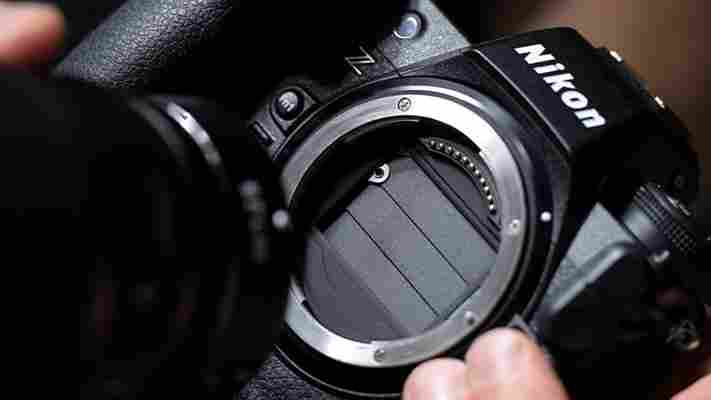
Most cameras also feature an electronic shutter, which has no moving parts but instead 'turns on and off' for image capture. This shutter type can be used for both photography and video. Until now, both mechanical and electronic shutters have featured in most digital cameras, but the Nikon Z9 is the first pro camera to go electronic-only. So why has Nikon done it?
The obvious answer is because it can. As Dirk Jasper told us "The Z9's sensor design and the supporting processing via Expeed 7 allow for the first time to have a mirrorless camera without the need for a mechanical shutter. By removing the shutter, we can enable technologies not being possible by using a mechanical curtain in front of the sensor," he said. As always, there's a bit more to it than that.
Mechanical vs electronic
More on the those 'technologies' later, but first let's dig into the relative strengths of mechanical and electronic shutters. As its name suggests, a mechanical shutter features moving parts and therefore its performance is limited.
Its shutter speeds max out at 1/8000sec, while frame rates appear to have peaked at 16fps, as seen in the Canon EOS 1DX Mark III . There's also an audible sound and vibration during shutter-action, plus a shutter-action life expectancy. That said, only the most trigger happy image makers are likely to wear out a shutter and incur a costly replacement.
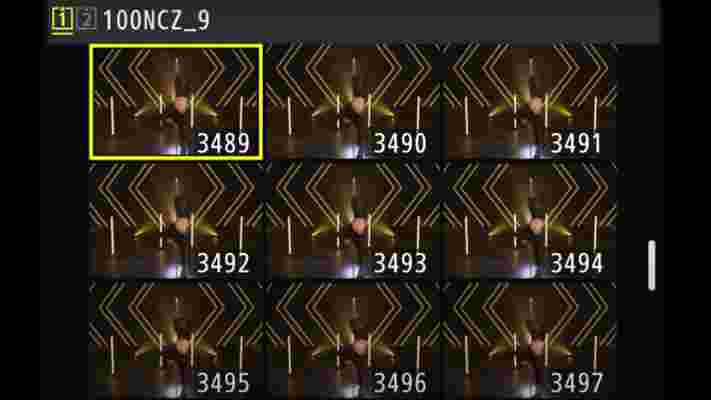
An electronic shutter trumps a mechanical shutter performance with faster maximum shutter speeds up to 1/32,000sec and lightning-fast frame rates like the 120fps we're seeing in cameras like the Z9. Another bonus is that the shutter action is vibration-free and can be silent – a dream for the likes of landscape, street and wedding photographers. All sounds promising, right? Well it's not all a one-way street, especially for freezing high-speed movement.
Unlike a mechanical shutter, where the whole image is frozen simultaneously, an electronic shutter 'reads' image data line by line onto the sensor – a process that's documented to typically take around 1/200sec and is otherwise known as 'rolling shutter'. Any action at higher speeds can display an adverse impact of rolling shutter. For example, you might have seen action images of warped golf clubs during a swing, oval-shaped balls in flight and curved airplane propellors in rotation.
Along with movement distortion, rolling shutter can also suffer from an ugly effect called 'banding' (light-dark-light-dark) when using flash or under high-frequency 'flickering' artificial lights.
Why now?
Most cameras let you choose the right shutter for your shooting situation. Freezing action or using flash? Go mechanical! Shooting landscapes and need your camera as steady as possible? Electronic shutter all the way! But the Nikon Z9 is a camera made for action that is relying entirely on an electronic shutter, so what's changed?
As you might expect, it's partly about speed. Nikon cites a combination of the Z9's new 45.7MP 'stacked' CMOS sensor, Expeed 7 processor and support for high-performance CFexpress Type B memory cards.
"The read-out speed of the sensor is the most relevant factor here," says Dirk. "Managing a high data flow at high speeds then also needs to be supported by the processing engine, which makes sure that all information is digitized and put away on a performant memory card at a scale that ensures the system keeps with the speed of new data coming in, be it high frame-rate shooting or high resolution video recording."
Indeed, Nikon told us that the Z9's scan rate is approximately 12× faster than that of the Nikon Z7 II . This means it exhibits roughly 1/12th the amount of rolling shutter distortion as the Z 7II. That's some serious power in its stacked sensor.
If the Z7 II has a typical rolling shutter speed, then 12x that speed essentially means that there are no scenarios that the Z9 will exhibit rolling shutter distortion. The early signs are promising. During our full review of the Nikon Z9 (coming soon), we used the camera in a variety of high-speed scenarios and have not experienced rolling shutter so far.
That doesn't mean there aren't some small teething problems. "We have received rare reports where users report minor banding under very specific conditions," says Dirk Jasper. "We are looking into ways how to counter these effects automatically and will try to rectify them via firmware update. These effects can be easily avoided by a slight change of the shutter speed," he added.
Shutter priorities
Nikon could have kept a mechanical shutter in the Z9 as a failsafe, even if it doesn't get used at all. But another benefit of removing it is simplicity and durability.
"A mechanical element is always a restriction by design and also a potential breaking point." explains Dirk Jasper. "For higher-end cameras, Nikon always communicated the life expectancy of shutter as part of the product information. By removing the shutter, we also remove a piece of the system that can be a life-limiting factor for the device and needs expensive repair and re-adjustment in case of failure."
So, does this mean that all cameras will soon go electronic-only? Not necessarily. Dirk gives us a glimpse. "At Nikon we have always lived a philosophy of what we call 'technology transfer'. All new technology will eventually trickle down through our line-up as long as it is feasible and also possible to implement in terms of cost."
But it's likely to remain a high-end feature for now. "Other than with firmware driven changes, the use of a purely mechanical shutter in cameras is definitely connected to processing power and the sensor hardware, which come at a cost," he explains. "Therefore scaling factors induced by production cost will definitely impact how much we will be able to have this spread to more models in the future."
So, it seems for now that only the expensive flagship cameras can afford to offer us a mechanical shutter-'less' design. But one thing's for sure – the new power behind the Z9 paves the way for revolutionary camera design changes.
I played PS5 on a 4K gaming projector and it blew me away
This week, I had the chance to take a 4K HDR gaming projector for a spin, and in order to put it through its paces I immediately hooked it up to my PS5 to see how it displayed some of the best looking games you can play this generation. And I came away thoroughly impressed.
To be more specific, the projector was the BenQ TK700STi . The company has been producing beamers of all budgets for years now, but the TK700STi marks its first attempt at a 4K HDR gaming-focused projector, and at $1,699 (around £1,249) the price is comparable to the 55-inch LG C1 OLED TV , which we think is among the best TVs for gaming you can buy.
And that’s what brings us onto this topic - why consider a 4K gaming projector when you can buy one of the best gaming TVs for roughly the same price? Before I sampled the BenQ TK700STi, it’s a question I would have - perhaps foolishly - weighed against the projector. Now, though, I can think of several reasons why a 4K gaming projector like the TK700STi is absolutely a worthwhile investment if you want a stunning gaming setup.
Let there be light
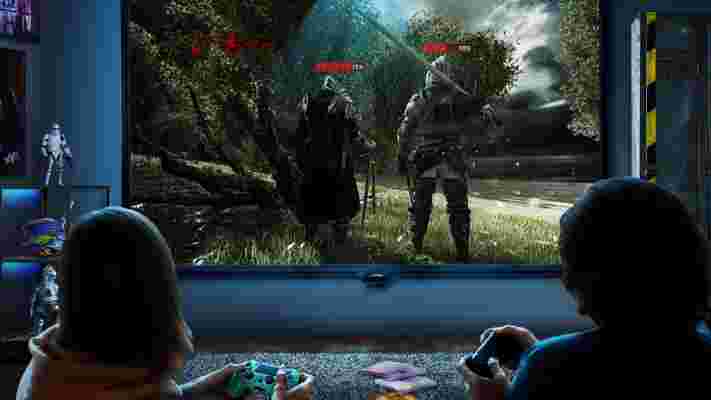
The thing that immediately surprised me with the BenQ TK700STi - aside from the blissfully simple initial setup - was just how well its picture displayed in a bright environment. Projectors, typically ones that dip below the $1,000 price point, often have a reputation of displaying a dimmer image in well-lit conditions.
That’s something that even some of the best 4K TVs can struggle with, depending on the amount of glare that can bounce off the display panel. OLED panels in particular aren’t quite as bright as LCD or QLED displays, either, so aren’t ideal if your room lets in a lot of natural sunlight.
Not so with the TK700STi. To my delight, the beamer was able to display games of various tones and lighting conditions - such as Demon’s Souls and Cyberpunk 2077 - with little to no issues. From the deepest blacks of the former’s oppressive Upper Latria to the scorching hot skies of Night City’s surrounding Badlands, the projector effortlessly displayed various environments and times of day as effectively as if they were shown on a HDR-capable TV screen.
That’s largely thanks to the TK700STi’s light source. At 3,000 lumens, it’s bright enough to capture every inch of the projected image even in brighter, naturally lit rooms. That’s even brighter than some of the best 4K projectors you can buy, such as the excellent Epson EH-TW9400’s 2,600 lumen output.
A versatile victory
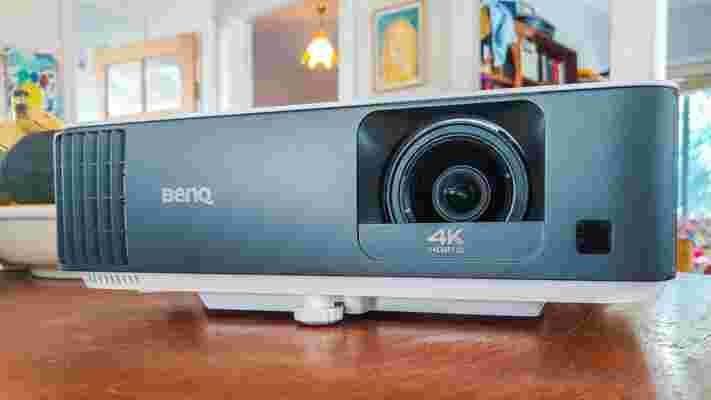
In my time using the TK700STi, I’ve found that it’s a lot more versatile than a 4K TV, too. It’s more portable, for one, and with a little effort, can be moved from room to room. Its short-throw capabilities mean that you don’t need a massive room for the display to properly align, either. A distance of around 6.5 feet is all you need to display a massive 100-inch picture. Plus, you can move it closer or further away from your wall or ceiling to shrink or expand the display size based on your preferences.
And even when your display size hits the triple digits, the beamer still puts out a crisp 4K image. That’s crucial to consider, as most large TVs that approach that size usually cost thousands of dollars, especially when they’re brand new. If you are looking for a truly mammoth screen size without the equally enormous cost, then, a 4K gaming projector like the TK700STi could provide an easier path to get the display size of your dreams.
Keeping versatility in mind, 4K gaming projectors like the TK700STi are good for more than just that. Depending on your beamer of choice, you’re also able to download and watch a variety of the best streaming apps. And doing so with a 4K HDR capable projector means you could be getting a cinema-like experience in your own home - especially if you crank that display size up beyond 100 inches.
The perfect match?
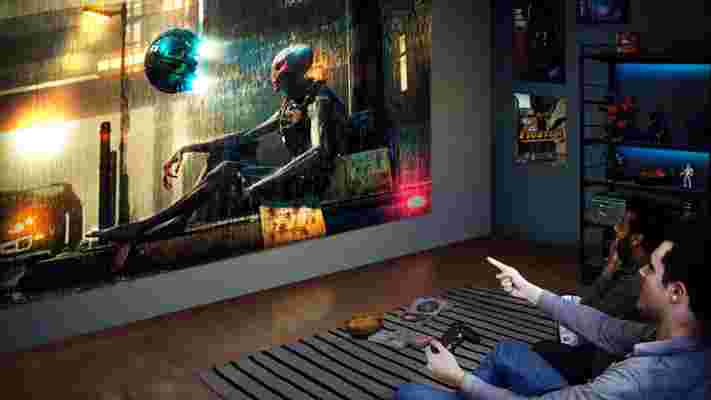
It’s been nothing but positivity for 4K gaming projectors so far, then, but it’s important to note that my experience wasn’t entirely free of flaws. As much as I’d love to say a 4K, HDR-ready gaming projector is a total improvement over a 4K TV, that’s not always going to be the case. One area where the projector fell short, which could actually be quite detrimental to a gaming experience, is input lag.
If you’re unaware, input lag is the time - measured in milliseconds - between an action being sent from your controller to the display. The LG C1 is a fantastic example in this case, featuring a base input lag of 10ms. That means if you press a button on your controller, the action will play out on the display roughly 10 milliseconds later.
Most 4K gaming projectors can’t quite keep up with 4K TVs in this regard, though at 16ms, the BenQ TK700STi is among the best beamers for minimal input lag. In fact, that’s quite remarkable for a projector, but there will be edge cases where an input lag above 10ms can be somewhat detrimental to the experience.
As an example, I tested out the newly released The King of Fighters 15, and results could’ve been better. That’s because fighting games like The King of Fighters, Street Fighter and Mortal Kombat more often than not require precise inputs to execute special moves, such as swinging the analog stick in a quarter-circle motion before immediately hitting a button.
A relatively high input lag means that the game occasionally has trouble registering these inputs on screen, even if your execution was perfect. That’s even less ideal if you take the game online against other players, where spotty internet connections can also hamper performance.
That aside, using a 4K HDR gaming projector’s Game modes is essential to keeping input lag as low as possible. But that isn’t without its caveats. The TK700STi’s Game Mode HDR, for example, isn’t as rich or crisp as HDR10 , which the beamer also supports. The trade-off, then, is that HDR10 looks nicer, but has an impact on input lag.
That’s potentially not a problem if you’re playing a game where the action is a bit less moment-to-moment, such as in an open world game like Horizon Forbidden West , or a racer like the upcoming Gran Turismo 7 . However, move into the realm of fast-paced games like Call of Duty: Vanguard , Doom Eternal or the aforementioned The King of Fighters 15, and the relatively high input lag starts to become an issue.
Final thoughts
Overall, it’s safe to say that I was blown away with my time playing PS5 on a 4K HDR gaming projector. The incredible brightness levels, matched with a crisp 4K image and gorgeous HDR allowed me to play some of the best PS5 games at a display size that would normally cost me a small fortune.
But while my experience with the TK700STi was largely a positive one, I don’t quite believe that 4K gaming projectors can match the best 4K TVs for gaming, at least in terms of overall performance. While the input lag with BenQ’s is impressively low, it’s still a touch too high for certain subgenres of game, and even its own game-centric modes can’t match the optimizations found in Samsung QLED and LG OLED TVs, for example.
Still, I’ve walked away from the experience as a bigger proponent of 4K gaming projectors than I once was, and I feel that in the near future, manufacturers will be able to further minimize the drawbacks of using a projector over a TV.
However, with new display panel standards like QD-OLED becoming more widely available this year, projector makers will need to find ways to keep up. More HDR modes for gaming projectors like HDR10+ as well as a sub-10ms input lag would be a fantastic start, and both are features I’d love to see projectors implement soon.
iPhone 14 Pro might still have a notch – but it could be a whole lot smaller
The most intriguing rumor we’ve heard about the iPhone 14 Pro and iPhone 14 Pro Max is that the phones might not have a notch , with a punch-hole used for the front-facing camera instead. However, the latest leak suggests that may not be the case.
Mark Gurman, a journalist with a good track record for Apple leaks, has claimed in his latest Power On newsletter for Bloomberg that the iPhone 14 range will have “a hole-punch-sized notch.”
So from the sounds of things that would mean a notch that’s the same sort of size as the aperture for a punch-hole camera. That said, there’s some uncertainty here, since usually the term 'hole-punch' is used to describe a cut-out in the screen, rather than a notch, and some sites have suggested that this is what Gurman means.
We’re not entirely sure either way, and there’s evidence in both directions, with a number of leakers suggesting the iPhone 14 Pro and Pro Max won’t have a notch at all, while at least one suggests they will have a small notch .
Further confusing matters, Gurman’s wording suggests this change could potentially come to every iPhone 14 model, which isn’t something we’ve heard before, but we could believe Apple would at least shrink the notch on every phone.
So this creates more questions than it answers, but some of Gurman’s other recent claims are clearer, as he also used this newsletter to reiterate things we’ve heard before, including that an iPhone SE 3 with 5G could land in the first half of the year.
Gurman also reiterated that a new iPad Pro with wireless charging is apparently in the works, and that the Apple Watch 8 , Apple Watch SE 2 , and a rugged Apple Watch will all be unveiled this year too.

Analysis: whether there’s a notch or not, in-screen Face ID looks likely
Whether you interpret Gurman’s words as meaning that the iPhone 14 range will have a punch-hole cut-out instead of a notch, or will have a tiny notch, something would need to be done about the Face ID components, as they wouldn’t fit in either of those options.
So if Gurman (and the many other leakers who’ve made similar claims) are right, then it looks very likely that the Face ID tech will be hidden under the display of at least some iPhone 14 models.
With that in mind, we’d also think a punch-hole camera is more likely than a small notch, since the former tends to be seen as more premium, and presumably wouldn’t be any harder to achieve.
But don’t count on all four iPhone 14 models getting this; Apple is likely to keep it as a premium feature, in which case, as the rumors suggest, you’ll probably have to go Pro to get this design upgrade.